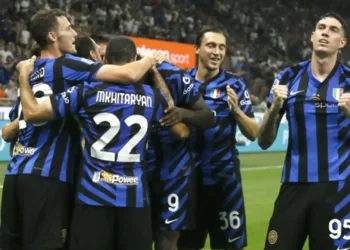Manchester United’s decision to invest £65 million plus add-ons in Benjamin Sesko represents one of the most intriguing transfer stories of the summer window. The 22-year-old Slovenian striker arrives at Old Trafford with a reputation as a scorer of spectacular goals, but the question that will define his success in English football is whether United can develop him into the consistent goalscoring machine they desperately need.
Standing nearly two meters tall, blessed with lightning pace, and possessing a thunderbolt of a shot, Benjamin Sesko appears tailor-made for the Premier League’s physical demands. His impressive frame and athletic attributes suggest that adapting to England’s top flight shouldn’t pose significant challenges, but his journey from RB Leipzig to Manchester United tells a more complex story about potential, development, and the fine line between promise and proven quality.
Table of Contents
The Transfer Battle: United’s Victory Over Premier League Rivals
Benjamin Sesko’s move to Manchester United didn’t occur in isolation. The striker attracted significant attention from multiple Premier League clubs this summer, with Arsenal initially showing strong interest before ultimately pursuing a different path. Newcastle United also entered the race for his signature, but United’s determination and financial commitment proved decisive in securing the deal.
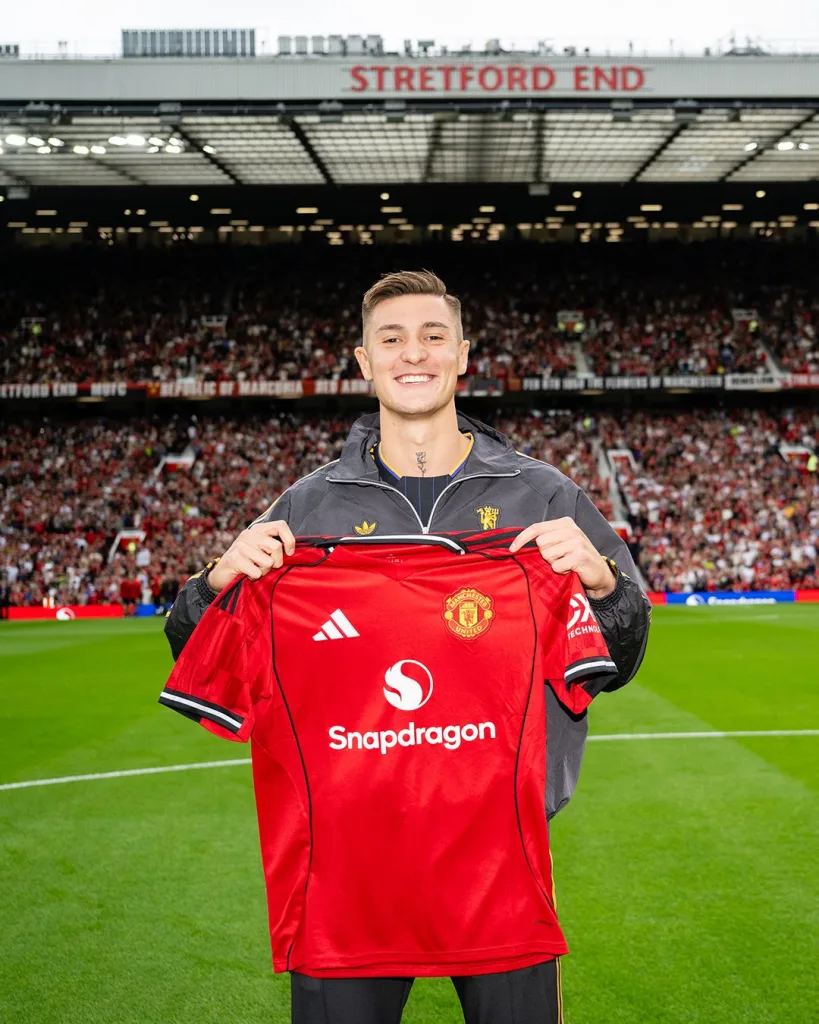
Arsenal’s decision to pivot toward 27-year-old Viktor Gyökeres from Sporting CP reveals the philosophical divide that makes Sesko’s transfer so fascinating. The Gunners, positioned on the cusp of major trophy success, opted for the more developed, immediate solution rather than waiting for a younger player’s potential to materialize. This strategic choice highlights the pressure that comes with competing at the highest level, where patience for development can be a luxury few title contenders can afford.
United’s willingness to invest in Benjamin Sesko’s future rather than seeking an instant solution reflects their current position in English football’s hierarchy. Unlike Arsenal, who needed a striker to complete their championship puzzle, United find themselves in a rebuilding phase where long-term investment in potential can coexist with immediate competitive needs.
The Leipzig Evolution: Two Years of Tactical Development
Benjamin Sesko’s two-season journey at RB Leipzig provides crucial insight into his development trajectory and the type of player United are acquiring. His progression from Red Bull Salzburg’s partner club in 2023 marked the beginning of a fascinating tactical evolution that has shaped his current profile.
The Goal Machine Phase: 2023-24 Season
During his first season in Germany, Benjamin Sesko’s performances suggested he was destined to become a single-minded goalscoring machine. Aged just 20 for most of the 2023-24 campaign, his output was genuinely impressive by any standard, particularly for such a young striker adapting to a new league.
| 2023-24 Bundesliga Performance | Benjamin Sesko |
|---|---|
| Goals per 90 minutes | 0.82 |
| Bundesliga ranking (goals per 90) | 3rd |
| Goals from inside penalty area | 13 of 14 |
| Opposition box touches ranking | 4th |
| Proportion of touches in opposition box | 17% |
His goals-per-90 rate of 0.82 ranked third in the entire Bundesliga, trailing only the elite company of Harry Kane and Serhou Guirassy (both achieving 1.14). This positioning among Germany’s most prolific strikers immediately established Benjamin Sesko as a genuine goal threat at the highest level.
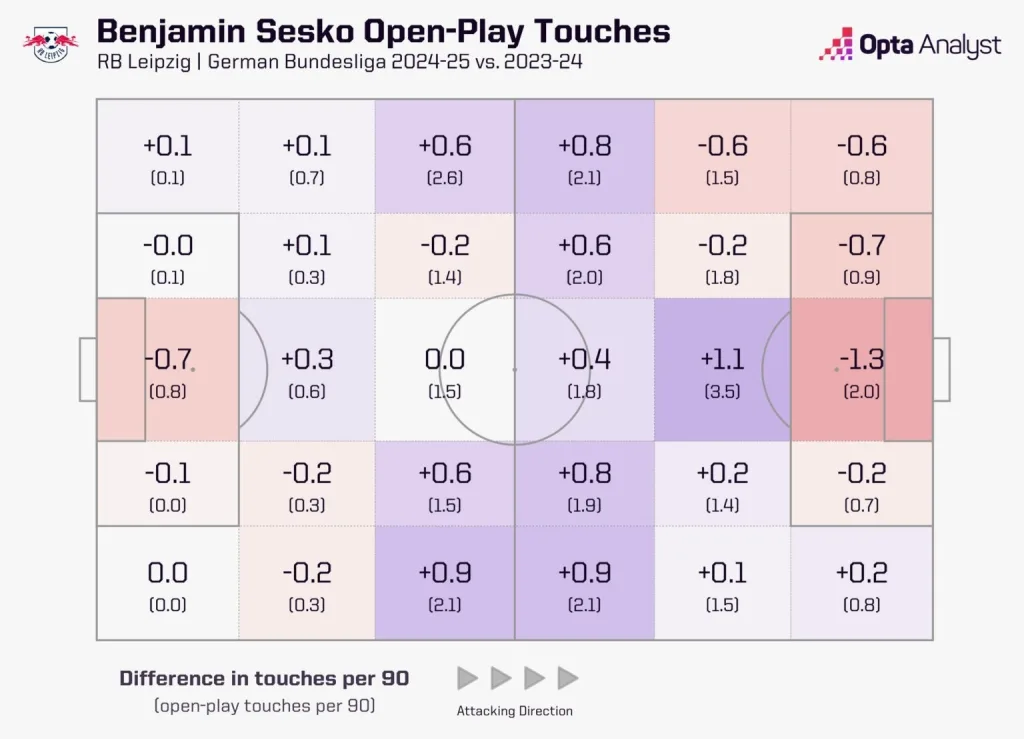
The concentration of his finishing was equally impressive. With 13 of his 14 Bundesliga goals coming from inside the penalty area, Sesko demonstrated the predatory instincts that mark natural goalscorers. His ranking fourth in the league for the proportion of on-ball actions (17%) made in the opposition’s box among players with 500+ touches revealed a striker who understood where goals are created and consistently positioned himself accordingly.
The Tactical Evolution: 2024-25 Season
The following season witnessed a fascinating tactical evolution in Benjamin Sesko’s game that both impressed observers and created questions about his long-term development path. Rather than simply improving his already strong goalscoring output, he demonstrated significantly expanded involvement in Leipzig’s overall attacking play.
| Season Comparison | 2023-24 | 2024-25 | Change |
|---|---|---|---|
| Bundesliga goals | 14 | 13 | -1 |
| Opposition box touches ranking | 4th | 39th | Significant drop |
| Proportion of touches in opposition box | 17% | 9.7% | -7.3% |
| Shots inside box per 90 | 2.4 | 1.5 | -0.9 |
This statistical evolution tells the story of a player whose role fundamentally changed within his team’s tactical structure. Benjamin Sesko got on the ball more frequently throughout the pitch but touched it significantly less in the most dangerous areas. His drop from fourth to 39th for the proportion of touches taken in the opposition box represents a dramatic shift in positioning and responsibility.
The reduction in close-range opportunities naturally affected his output. Despite playing almost 15 hours less football, Sesko scored just one fewer Bundesliga goal (13) than the previous season, suggesting maintained efficiency despite changed circumstances.
The Art of Spectacular Finishing
What sets Benjamin Sesko apart from many strikers his age is his remarkable ability to score spectacular goals from distance. His preference for getting on the ball outside the penalty area stems partly from his confidence in his ability to score incredible goals from long range, a skill that makes him a constant threat regardless of his positioning.
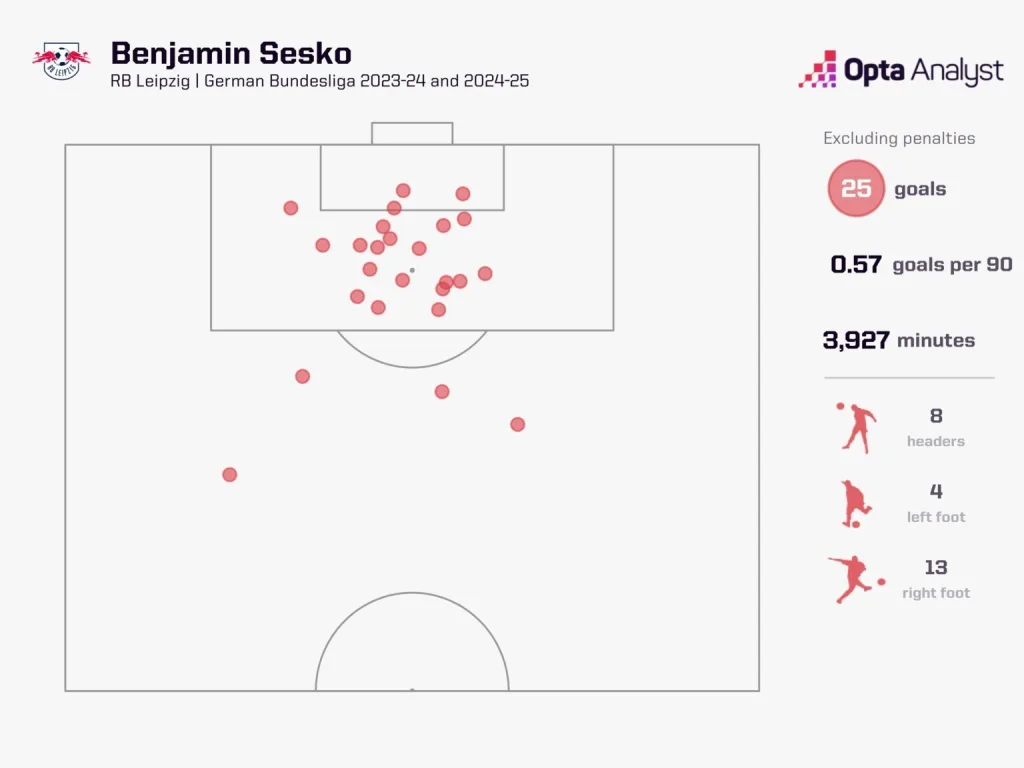
The variety in his finishing demonstrates impressive technical versatility that should translate well to different tactical systems. Across his two seasons with Leipzig, his 25 non-penalty goals showcase remarkable diversity in his scoring methods.
Goal Scoring Breakdown (2023-25)
| Finishing Method | Goals Scored | Percentage |
|---|---|---|
| Right foot | 13 | 52% |
| Left foot | 4 | 16% |
| Header | 8 | 32% |
This distribution reveals a striker comfortable finishing with both feet and possessing genuine aerial threat – a combination that makes him difficult for defenders to prepare against. Many of his goals follow explosive movement, often featuring devastating bursts of pace that leave defenders struggling to keep up.
Elite Athletic Profile: The Physical Foundation
Benjamin Sesko’s athletic capabilities provide the foundation for his success and suggest strong adaptation potential for Premier League football. His pace statistics from the Bundesliga reveal genuinely elite speed that should translate effectively to English football’s demands.
Pace Comparison Analysis
| Speed Metrics | Benjamin Sesko Performance |
|---|---|
| Bundesliga top speed ranking | 26th fastest |
| Maximum speed recorded | 35.7 km/h |
| Gap to fastest player | 1.5 km/h (Jean-Mattéo Bahoya – 37.2 km/h) |
| Premier League equivalent | Similar to Gabriel Martinelli, just behind Erling Haaland |
According to the Bundesliga’s official website, Benjamin Sesko posted the 26th-fastest top speed in the competition last season, clocking 35.7 km/h. This placed him behind only a handful of strikers while being just 1.5 km/h slower than the league’s fastest player, Eintracht Frankfurt’s 20-year-old midfielder Jean-Mattéo Bahoya.
Translating these figures to Premier League standards, his pace would put him roughly in line with Gabriel Martinelli and just behind Erling Haaland – elite company that underscores his physical tools for success in English football.
The Haaland Comparison: Similarities and Differences
Comparisons between Benjamin Sesko and Erling Haaland have become unavoidable since the Slovenian’s emergence, largely due to their similar size, build, eye for goal, and shared development path through the Red Bull system before moving to German football. However, while 2023-24 suggested Sesko might develop a similarly focused goalscoring game, his recent evolution indicates potentially greater tactical variety.
This isn’t to suggest that Benjamin Sesko surpasses Haaland in quality, but rather that his game may offer different dimensions that could prove valuable in various tactical contexts. Where Haaland has refined his role as the ultimate penalty-box predator, Sesko appears to be developing as a more complete forward capable of contributing across multiple phases of attacking play.
Expected Goals Analysis: The Efficiency Question
While Benjamin Sesko’s spectacular long-range goals capture attention, they don’t represent the most sustainable source of consistent goalscoring output. His expected goals performance over two seasons reveals both encouragement and areas for concern that United will need to address.
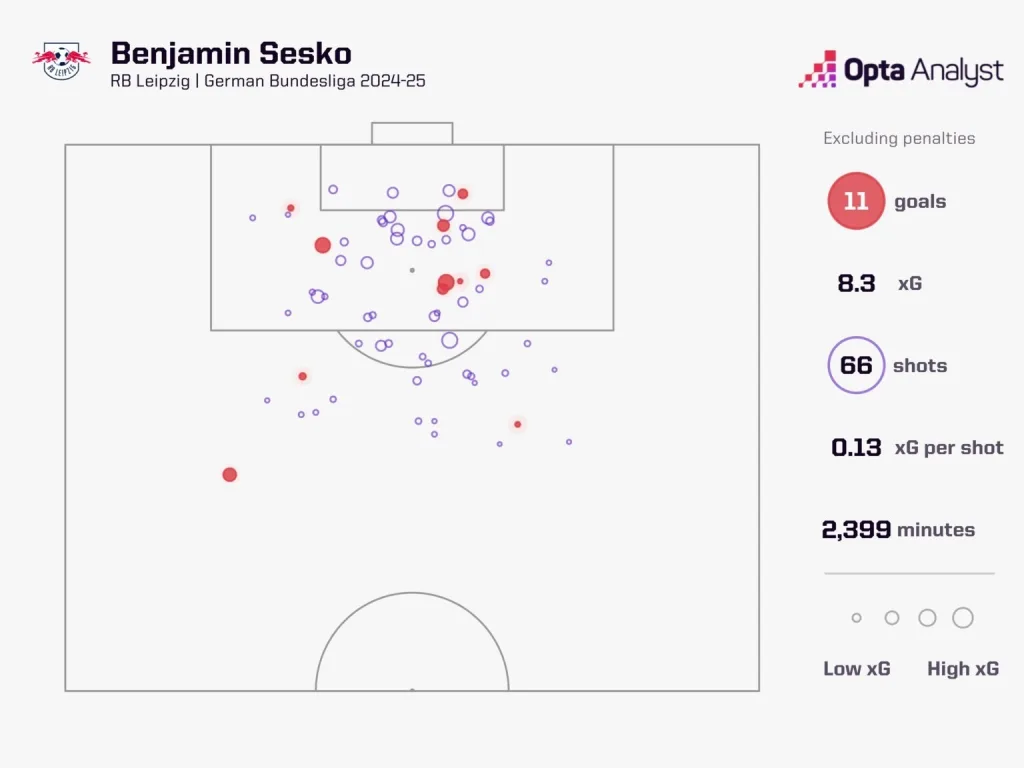
Expected Goals Performance Comparison
| xG Performance | 2023-24 | 2024-25 |
|---|---|---|
| Non-penalty xG overperformance | +6.3 (1st in Bundesliga) | +2.7 (20th in Bundesliga) |
| Non-penalty goals inside box | – | 8 |
| xG for inside box shots | – | 6.47 |
| Inside box overperformance | – | 1.53 (33rd best) |
In 2023-24, Sesko overperformed his non-penalty expected goals by 6.3, the best rate in the entire Bundesliga. This dramatic overperformance suggested either exceptional finishing ability or unsustainable luck that would inevitably regress.
The following season provided clarity, with his overperformance dropping to +2.7 – still a good return ranking 20th in the league, but much closer to sustainable norms.
Focusing specifically on non-penalty shots from inside the box excludes his spectacular long-range strikes and provides better insight into his core finishing ability. In the Bundesliga last season, Benjamin Sesko scored eight non-penalty goals from inside the penalty area from shots worth 6.47 xG, creating an overperformance of 1.53 that ranked 33rd best in the league.
This consistent overperformance across both seasons suggests better-than-average finishing ability that provides a solid foundation for United to develop.
The Positioning Challenge: Getting into Dangerous Areas
The most significant concern regarding Benjamin Sesko’s development relates to his ability to consistently get into dangerous goalscoring positions. His expected goals rate reveals a pattern that United will need to address through tactical adjustment and coaching.
Concerning Positioning Statistics
| Metric | Benjamin Sesko 2024-25 | Comparison |
|---|---|---|
| Non-penalty xG all season | 8.31 | – |
| Non-penalty xG per 90 | 0.31 | Same as Joshua Zirkzee |
| Inside box shots per 90 | 1.5 | Down from 2.4 previous season |
Benjamin Sesko posted just 8.31 non-penalty expected goals all season, producing a rate of 0.31 xG per 90 minutes. This figure exactly matches what United forward Joshua Zirkzee managed in the Premier League last season, and fans complained persistently about Zirkzee’s lack of goal threat.
The comparison highlights the challenge facing United manager Ruben Amorim: how to get Sesko into better goalscoring positions more consistently. The solution may lie in tactical adjustment, with Sesko operating as the lone forward for United rather than playing up front in a two-striker system as he did at Leipzig.
Consistency Concerns: The Streak Pattern
Benjamin Sesko’s goalscoring record reveals a pattern of streakiness that reflects his youth and suggests areas where experience and tactical refinement could yield improvement. His goal distribution across both seasons shows dramatic hot and cold periods that championship-level teams typically cannot afford from their primary striker.
Scoring Streak Analysis
| Season | Notable Streaks | Historic Achievement |
|---|---|---|
| 2023-24 | 7 goals in 7-game streak (half of season total) | Youngest since Rudi Völler (1982-83) to score in 7 consecutive Bundesliga matches |
| 2024-25 | 5 goals in 4 games; 7 goals in 8 games | Also: 3 goals in 11 games; 1 goal in 10 games |
In 2023-24, Benjamin Sesko scored half of his 14 goals during a seven-game scoring streak, becoming the youngest player since Rudi Völler in 1982-83 to score in seven consecutive Bundesliga matches. While this achievement demonstrates his potential for sustained excellence, it also highlights how dependent his overall output was on one exceptional period.
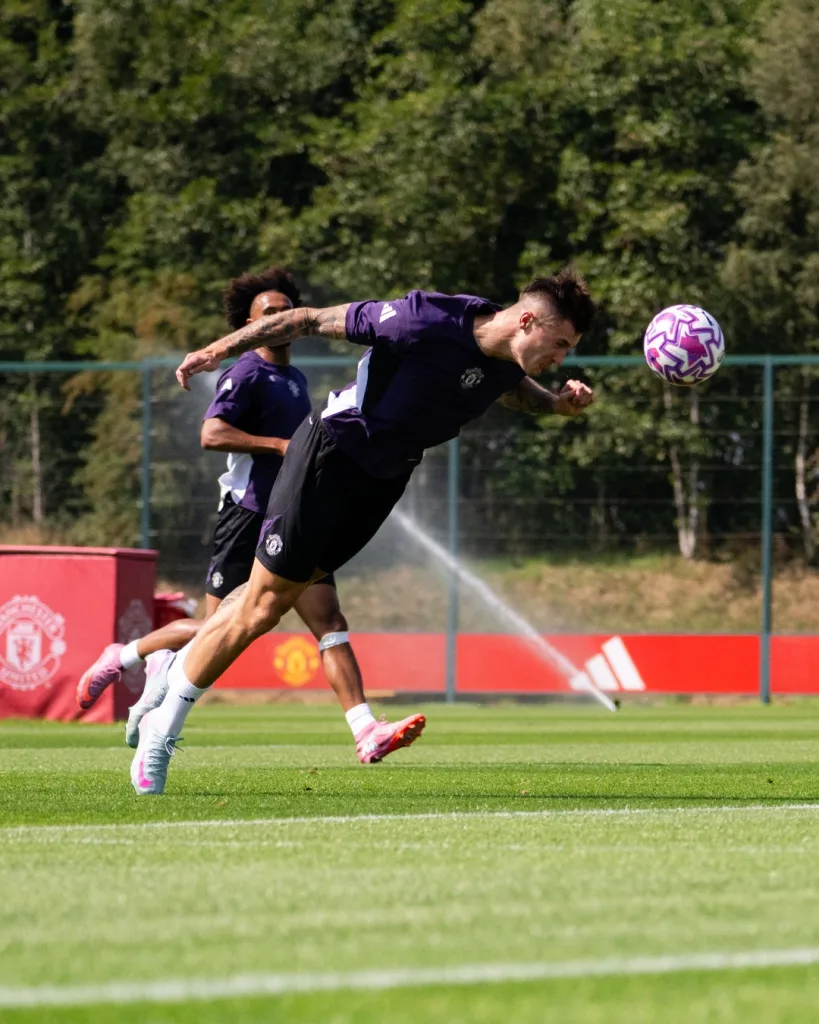
The pattern continued last season with separate hot streaks of five goals in four games and seven in eight, balanced by concerning cold spells including three goals in 11 games and one goal in 10 games. These fluctuations suggest a player still learning to maintain consistent threat levels across extended periods.
United’s Strategic Context: Building for the Future
Manchester United’s investment in Benjamin Sesko must be understood within the context of their current squad building strategy and competitive position. Unlike Arsenal, who needed an immediate solution to complete their championship puzzle, United find themselves in a different strategic position that allows for longer-term thinking.
The club has already invested heavily in their attacking options this summer, creating a supporting cast that should reduce pressure on Sesko to carry the entire goalscoring burden immediately.
United’s Summer Attacking Reinforcements
| Player | Previous Club | Position | Key Strength |
|---|---|---|---|
| Matheus Cunha | Wolves | Left-sided attacker | 15 Premier League goals (7th highest) |
| Bryan Mbeumo | Brentford | Right winger | 418 runs in behind (most in Premier League) |
Matheus Cunha arrives from Wolves as a left-sided attacker who served as their greatest goal threat last season. Only seven players scored more Premier League goals than his 15, demonstrating the proven quality United have added to their wide positions.
Bryan Mbeumo brings a different dimension from Brentford, having made more runs in behind the opposition when his team had the ball than anyone else in the Premier League (418) in 2024-25. His constant movement and work rate could complement Sesko’s preference to drop deep perfectly.
Tactical Fit: Amorim’s 3-4-2-1 System
Having already signed two proven Premier League goalscorers for the wide positions in Amorim’s 3-4-2-1 formation, United have created a tactical environment where their center-forward won’t necessarily need to hit 20 goals in his debut season. This reduces immediate pressure on Benjamin Sesko while providing the supporting cast needed for his development.
The tactical setup should benefit Sesko’s multifaceted game. His ability to drop deep and contribute to build-up play aligns well with Amorim’s preference for fluid movement and positional interchange. Meanwhile, the pace and movement of Cunha and Mbeumo should create space for Sesko to exploit both in deep positions and when making runs toward goal.
The Development Question: Potential vs. Performance
United’s acquisition of Benjamin Sesko ultimately represents a bet on potential rather than proven performance at the highest level. The question that will define this transfer’s success is whether United can accelerate his development from a scorer of great goals into a great goalscorer.

The statistical evidence suggests significant room for improvement in consistency and positioning, but also reveals genuine quality in finishing ability and athletic tools. Sesko’s youth at 22 provides time for development, while his existing experience at Leipzig demonstrates readiness for high-level competition.
Key Development Areas
| Area for Improvement | Current Status | Potential Solution |
|---|---|---|
| Consistent positioning | 0.31 xG per 90 | Tactical adjustment to lone striker role |
| Penalty area presence | 9.7% of touches in opposition box | Focus on movement and timing |
| Goalscoring consistency | Streaky patterns | Experience and tactical refinement |
The challenge for United’s coaching staff will be maintaining Sesko’s ability to contribute across the pitch while improving his goal threat through better positioning and movement. The shift from Leipzig’s two-striker system to United’s lone forward role could prove crucial in this development.
Read More: Giovanni Leoni’s Liverpool Dream: The Italian Wonderkid Who Earned Arrigo Sacchi’s Seal of Approval
FAQs
Why did Manchester United pay £65 million for Benjamin Sesko?
Manchester United paid £65m plus add-ons for Benjamin Sesko because he offers a unique combination of size (nearly 2 meters tall), pace (35.7 km/h top speed, 26th fastest in Bundesliga), and goalscoring ability. At 22, he scored 0.82 goals per 90 in his first Bundesliga season (3rd best in league) and has shown tactical versatility in his development at RB Leipzig.
How does Benjamin Sesko compare to other Premier League strikers?
Benjamin Sesko’s pace (35.7 km/h) puts him roughly in line with Gabriel Martinelli and just behind Erling Haaland in Premier League terms. However, his expected goals rate of 0.31 per 90 matches Joshua Zirkzee’s Premier League output, suggesting he needs to get into better goalscoring positions more consistently.
What are Benjamin Sesko’s main strengths and weaknesses?
Strengths include elite pace, spectacular long-range shooting, versatile finishing (13 right foot, 4 left foot, 8 headers from 25 non-penalty goals), and ability to contribute in build-up play. Weaknesses include inconsistent goalscoring streaks (scored half his 2023-24 goals in one 7-game run) and limited positioning in dangerous areas (only 9.7% of touches in opposition box last season).
How will Benjamin Sesko fit into United’s tactical system?
Under Ruben Amorim’s 3-4-2-1 system, Benjamin Sesko will operate as the lone striker, which should help him get into better positions than Leipzig’s two-striker system. United have added proven goalscorers Matheus Cunha (15 Premier League goals) and Bryan Mbeumo (418 runs in behind – most in PL) to support him in wide positions.
Why didn’t Arsenal sign Benjamin Sesko instead of Viktor Gyökeres?
Arsenal chose 27-year-old Viktor Gyökeres from Sporting CP over 22-year-old Benjamin Sesko because they needed a more developed, immediate solution for their title challenge. Arsenal didn’t want to wait for Sesko’s potential to develop, while United, in a rebuilding phase, can afford to invest in his future growth rather than needing instant results.





